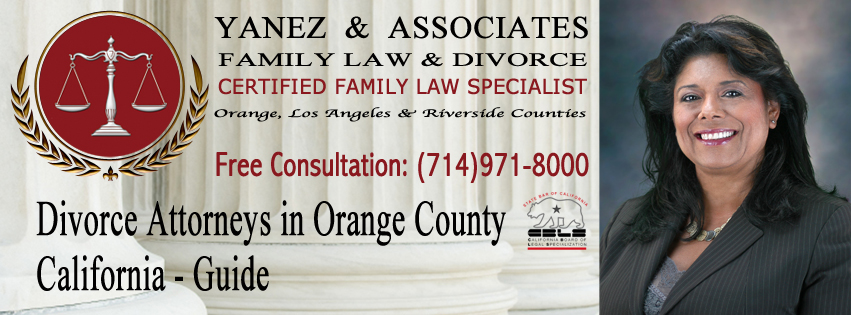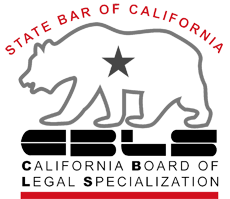Divorce Attorneys in Orange County Guide
The Basics of Ending your Marriage or Registered Domestic Partnership in California
Divorce Attorneys in Orange County explain: Under California law, either spouse or either party in a domestic partnership can decide to end the marriage or domestic partnership at any time. California is a “no fault” divorce state, so proof of an error or mistake in the marriage is not necessary in order to obtain a divorce. If one spouse wants a divorce, he or she only needs to state that there are irreconcilable differences in the marriage as the reason for ending the legal relationship.
The party who is served divorce papers cannot stop the marriage from ending; instead, by refusing to participate, the party who initiates the proceedings will obtain a default judgment and the divorce will go through.
Usually, there are only three ways to end a marriage or a registered domestic partnership in California. You can file for a divorce, you can obtain a legal separation, or you can apply for an annulment. Each of these offers different benefits, and each of them is a separate legal procedure.
Annulment - An annulment legally erases a marriage or domestic partnership, and is the simplest way to end the relationship. Because of this, it can be difficult to qualify for annulment. A marriage is never legally valid when it is incestuous or bigamous. A marriage or domestic partnership can be declared invalid through annulment through one of the following reasons:
• One of the parties was under 18 at the time of the marriage or domestic partnership;
• One of the parties was married or registered due to fraud, force, or while physically or mentally incapacitated;
• Either side was already legally married or in a domestic partnership.
Click here for more information about annulments in California.
Legal Separation - A legal separation does not end a marriage or a domestic partnership, but it can be a step towards divorce. Like a divorce, a legal separation does allow for court orders regarding the division of property and assets, child custody, child support and family support.
A couple may opt for a legal separation instead of a divorce for several reasons, including the following.
• Couples may wish to avoid divorce due to religious or personal beliefs;
• Couples may wish to remain married for financial reasons, like health insurance or other benefits;
• A couple may not yet meet the residency requirements for divorcing in California, so they obtain a legal separation in the meantime;
• A couple may want to live apart with court orders regarding money, property and parenting, but are not yet ready for a divorce.
Click here for more information about legal separations in California.
Divorce - A divorce, also called dissolution, is the most common way to end a marriage in California. It is usually best to hire a divorce attorney to help you through your divorce. Cases can vary in length and complexity, often depending on the assets and debts or the children involved in the divorce. A typical divorce can last around six months, and can result in court orders regarding child custody, visitation, child support, spousal support, family support, and the division of property and debts.
We will expand on elements of the divorce process below.
Alternative Option for Ending a Domestic Partnership or a Marriage in California

Planning on terminating a domestic partnership or a marriage in Orange Count y or Los Angeles, have you considered a summary dissolution, rather than a divorce or legal separation?
If you’re ending a domestic partnership or a marriage, you may also have the option to end your relationship through a summary dissolution, rather than a divorce or legal separation. A summary dissolution is done through the Secretary of State, so it allows the parties to avoid court and simplify the process.
In order to qualify for a summary dissolution of a domestic partnership or a marriage through the Secretary of State, you must meet the following requirements.
• Both parties must want to end the marriage or domestic partnership;
• Your marriage or domestic partnership must have lasted for no more than five years;
• There cannot be any children born or adopted together during the marriage or domestic partnership, and neither party can be pregnant at the time of the summary dissolution;
• Neither party can own any land or buildings;
• Neither party can rent any land or buildings unless it is the place where you currently live;
• With the exception of car loans, the partners have no more than $6,000 in debt that has been acquired since the date of the domestic partnership;
• With the exception of cars, the partners have no more than $40,000 of property that has been acquired since the date of the domestic partnership;
• Neither party can ask for support from the other;
• There can be no community property to divide, so you must already have a signed property division agreement, including vehicles and debts, or a form that states that there is no property to divide.
• If you are ending a marriage through summary dissolution, you must also meet the residency requirements for divorce, listed below.
However, if you do not qualify for a summary dissolution but wish to end your marriage or domestic partnership, you will have to file for a divorce, annulment or legal separation.
Am I Eligible to Divorce in California?
California’s Residency Requirement for Divorce
California has a residency requirement for those who apply for a divorce within the state. In order to file, it is required that you meet the residency requirement by the date of filing. In order to file in California, either spouse must have lived in California for at least the last six months. Additionally, either spouse must live in the county where the divorce paperwork will be filed for at least the last three months.
If you do not meet the residency requirement, you may be able to obtain a legal separation in the meantime, and finalize the divorce when you are eligible to file in California.
Two Exceptions to the California Residency Requirement
There is an exception to the residency rule for same sex married couples who were married in California, but do not live in California, and who do live in a state that will not allow for the dissolution of a same sex marriage. If you meet these requirements, you may file for divorce in the county where you were married.
However, if neither spouse currently lives in California, the Court may not be able to issue a valid court order regarding property, debt, spousal support, child support, or child custody and visitation. Like with all divorces, it is always in your best interests to discuss your options with a qualified divorce lawyer in California prior to filing for divorce.
There is also an exception for couples that have registered for a domestic partnership in California. By doing so, the couple has already agreed to the jurisdiction of California Courts to end the partnership, regardless of current residency.
If neither spouse currently resides in California, issuing court orders for property, debt, child support, child custody, visitation, and spousal support may not be possible. An Orange County lawyer who has experience in domestic partnerships can help.
Domestic partners who did not initially register their partnership in California must meet the California residency requirements listed above.
Ending both a domestic partnership and a same sex marriage at the same time requires couples to meet the requirements for both.
Understanding the Divorce Process in Southern California

Divorce is the most common way to end a marriage in California. It is usually best to hire an experienced divorce attorney to help you!
If you have determined that a California divorce is right for your situation, and that you meet the residency requirements, you are ready to start the divorce process. The information provided on this page is in no way a substitute for professional legal advice from a qualified divorce attorney in California. It is always a good idea to discuss your situation and your options with a skilled attorney.
When it comes to the terms of your divorce, including child support, child custody and visitation, the division of property and debts, and spousal support, you and your spouse may not agree on everything. However, divorce court is not your only option. You can also try to work things out on your own, or you can opt to try a form of alternative dispute resolution.
Alternative Dispute Resolution in California Divorces
If you and your partner are on good terms, and domestic violence plays no part in your relationship it may be possible to use a form of alternative dispute resolution to negotiate the terms of your divorce.
Not only does this save you time and money by working together, but it also allows you and your spouse to have more control over the outcome of your divorce. Nobody knows your family like you do, and in court the judge would have to determine what decisions are in the best interests of your family based on the little information he or she has from your divorce case.
There are two common types of alternative dispute resolution that allow you to work out the terms of your divorce outside of a courtroom: Mediation and Collaborative Divorce.
Mediation
Mediation is one way to determine the terms, or some of the terms, of a divorce. It involves both parties meeting with a mediator who facilitates discussions and negotiations. A mediator is not there to make decisions for you, but to help you and your partner talk through the issues that need to be resolved in a divorce.
A mediator will not force either party to agree to anything; however, the goal of mediation is for the couple to come to a decision together and both agree to it.
If there are issues that have not been resolved at the end of mediation, those issues can be brought before the judge.
Collaborative Divorce
Collaborative divorce, or collaborative law, is another way for a couple to work through issues surrounding a divorce outside of the courtroom.
A collaborative divorce begins with each party separately hiring and meeting with a collaborative law attorney. Both parties and their lawyers also collaborate regularly, in order to determine the best course of action and terms of the agreements.
Both parties and their attorneys usually also sign an agreement stating that they will not take the divorce to court, but will work it out in collaboration. In the case that the parties are unable to reach an agreement and decide to bring the case to court, the lawyers will usually withdraw, and both parties will need to hire new divorce attorneys.
It is not uncommon for either party to also bring child custody specialists, accountants, or property valuers into these collaborative meetings. These people can provide expertise that can help the parties come to an agreement outside of the courthouse.
If alternative dispute resolution is not for you, if it fails to yield results, or if domestic violence has played a role in your marriage or domestic partnership, your divorce may go to court.
The Process of Filing for Divorce in California
If you have determined that filing for divorce is the appropriate way to terminate your marriage or domestic partnership in California, the first step (after hiring your divorce attorney) is to collect, fill out and file the correct forms.
Please note that if you are a victim of domestic violence, it is not always best to serve divorce paperwork to your spouse without a safety plan. Contact a domestic violence agency in your count for assistance as soon as possible.
The petitioner, or the party who files for divorce, can obtain the forms online, at most courthouses, or in public libraries. Your divorce lawyer can help you fill out the forms correctly, as a simple mistake on a legal document can have unintended consequences.
Filing the divorce forms correctly entails handing them to a court clerk in the correct office at the correct courthouse and paying a filing fee. For those who cannot afford the fee, a fee waiver application is available. You must meet the residency requirements in the county where you file your divorce paperwork in order to file for a divorce.
The court clerk will file copies of the forms to initiate the case, and return the originals to the petitioner marked as filed.
Service of Process
The respondent, or the other party in the divorce, has the right to be notified about the divorce proceedings in time for the respondent to go to court and share his or her side of the story with the judge prior to the judgment.
The service of process is the official notification to the respondent. Any person who is over 18 and who is not involved in the case can serve these forms. This can be a friend or a process server.
The person who serves copies of the court forms to the respondent is required to fill out a proof of service after serving the papers. Either the process server or the petitioner will file the proof of service with the court clerk prior to the hearing.
The respondent then has the opportunity to respond to the court within 30 days of being served divorce paperwork. Only the petitioner can file a Request for Dismissal to dismiss the divorce case, so if the respondent wishes to stop the divorce proceedings, he or she must discuss it with the petitioner.
The respondent has several options in response to the paperwork:
• Do nothing. Failure to respond will likely lead to the judge making a decision to end the marriage or dissolve the registered domestic partnership without the input of the respondent. This is called a default case or an uncontested case.
• File a response with the court that disagrees with what the petitioner is asking for. This is called a contested divorce, and it means that the parties cannot agree and the judge will determine the decision regarding the divorce.
• Work with the petitioner to determine a mutually beneficial agreement. The respondent can either respond to the order or not in this case, but there should be a signed document that lays out the terms of the divorce agreement that was reached by both parties outside of Court.
If the respondent chooses to file a response with the court, he or she will have 30 days to select the appropriate forms, fill them out correctly, and pay a filing fee to file the papers with the court clerk. Like with the original divorce paperwork, the paperwork will have to be served on the other party, and the server will need to file a proof of service form with the court clerk.
Responding in a Contested Divorce
A contested divorce may exist because the respondent disagreed with some or all of the issues in the divorce case. Either way, the response filed with the judge allows the respondent to tell his or her side of the story to the judge.
Alternative dispute resolutions are still an option if both parties agree on it. Mediation and Collaborative Law allow the parties to have more control over the outcome of the divorce. If the issues cannot be resolved outside of court, a trial date will be set.
Uncontested Divorce or a Default Divorce
Whether you choose to respond to the petition for divorce in agreement with the other party or not, you have the option to try working out a divorce agreement with your spouse or partner. This means you can agree to end the marriage or not. Your agreement should also include agreements regarding property division, debt responsibility, spousal support, child support, child visitation and child custody.
A form of alternative dispute resolution may be a great option if you choose to work these out with your spouse outside of court. Mediation or Collaborative Law may offer you more control over the outcome of your divorce.
Preliminary Declaration of Disclosure
Both parties are required to exchange financial information showing both debts and assets. The goal of the preliminary declaration of disclosure is to get the process of dividing up debts and assets between the spouses. In California, a community property state, any property that is considered to belong to both spouses and partners is divided equitably between the two.
The Divorce Judgment
At the conclusion of a divorce, a divorce judgment is issued. A divorce is not final or legal until the judge has signed the divorce judgment.
A divorce cannot legally be finalized until at least six months after the case was initially filed. Both sides must sign paperwork to finalize the divorce.
A divorce judgment may include several court orders, including a child custody order, a visitation order, a spousal support order, a family support order, or orders regarding the division of property. Determining the terms of these orders can complicate a divorce and extend the amount of time (and potentially, the cost) of a divorce.
Every divorce is unique, and every family has unique issues that need to be settled. It is always best to discuss your options with a skilled divorce and family law attorney in California.
Court Orders & Options That may vary in Every Divorce
Every divorce and every family situation is unique. Not every divorce judgment includes the same terms, and in each case the terms of the divorce settlement and the terms of the court orders that may or may not be necessary can vary. The following court orders may be included in your divorce if necessary.
Spousal Support or Partner Support Order
When a couple divorces, one partner may be required to pay the other a support payment on a monthly basis. When a married couple divorces, it is called spousal support. When a registered domestic partnership is legally dissolved, this payment is called partner support. Sometimes it is also called alimony.
Spousal support can be awarded during a divorce, a legal separation, an annulment, or because of a domestic violence restraining order. For more information contact a restraining order attorney.
A temporary spousal support order can be issued during the divorce process if one party is in need immediately and the parties have separate finances. It is important to discuss this with your divorce attorney as soon as possible so that your finances are taken care of no matter how long your divorce takes.
At the conclusion of your divorce, a permanent or long-term spousal support order may be issued.
How is Spousal Support or Partner Support Calculated?
A temporary spousal or partner support order is usually issued at the beginning of a divorce case, and lasts for the duration of the divorce proceedings. Your local court likely has a formula to calculate temporary spousal support in your jurisdiction.
A permanent or long term spousal or partner support order is not calculated according to a formula in California, rather it is determined on a case-by-case basis. The California Family Code requires the judge to consider the following factors in determining child support.
• The length of the domestic partnership or marriage;
• The needs of each person in order to maintain the standard of living they held during the marriage or domestic partnership;
• The amount each person pays or is able to pay in order to maintain the standard of living they had during the marriage or domestic partnership, including current earnings and earning capacity;
• If one spouse cares for the children, whether that spouse is currently able to have a job while caring for the children;
• The health and age of both parties;
• Debts and property within the marriage or domestic partnership;
• Whether one spouse or domestic partner helped the other get education, training, a career, or a professional license;
• Whether domestic violence played a role in the domestic partnership or marriage;
• Whether either party’s career was affected by unemployment or by caring for children during the marriage or domestic partnership;
• The tax impact of spousal support.
A spousal support order is a legal court order, and failure to abide by the terms of the court order can lead to being held in contempt of court. If there is a change in circumstances, such as job loss, you may apply for a modification of a spousal support order to accommodate those changes.
Property Division and Division of Debts in a California Divorce
The division of property and debts in a California divorce can be one of the most complicated and time consuming aspects of a divorce. Making a mistake or hiding information can result in harsh consequences, and prior to entering into negotiations; it is imperative that you consult a California family law attorney.
A property agreement is a court order issued following a divorce. It may list which party is responsible to pay certain debts, or that one party is required to relinquish certain property or assets to the other, among other things. Property, under California law, is anything that can be bought or sold, or anything that has value. For example:
• A home,
• A car,
• Furniture,
• Clothing,
• Bank accounts,
• Cash,
• Pension plans,
• 401(k) plans,
• Stocks,
• A business,
• Pets.
During a divorce, property and debts must be divided between the parties. If you opt for mediation or try to work out the terms of your divorce outside of court, you may make these decisions on your own and then have a judge sign off on the property agreement you created. However, if your divorce is contested, a judge will determine the division of property and debts in your divorce. The judge will issue a formal order regarding this division at the end of your divorce.
Community Property and Separate Property in Orange County California

Is it possible for separate property to become community property, and for community property to become separate property?
California is a community property state. This means that when a couple marries or registers their domestic partnership, any property or debts they had before the marriage or registration is considered separate property, and property and debts acquired after the date of the marriage or registration is considered community property, and belongs to both parties. It is possible for separate property to become community property, and for community property to become separate property.
When the couple divorces, each party has separate property and debts, and the community property and debts are divided equitably between the two.
Community Property
Anything that spouses or domestic partners own together is considered community property. This includes anything bought or any debt acquired during the course of the marriage or domestic partnership, with the exception of gifts and inheritances. It also includes anything earned during the marriage or domestic partnership, and anything bought with those earning.
Debts accumulated during the course of the marriage or domestic partnership are considered community debts even if only one person incurred the debt or only one party is aware of the debt, for example if a credit card is only in one partner’s name.
Because California is a community property state, each spouse or partner is responsible for one half of the community debt, and each spouse or partner owns half of the community property.
Determining community property can be complicated if you or your spouse or partner did not live in California for the duration of your marriage or domestic partnership. Property acquired in another state may make your property division more complex, but discussing your situation with a skilled family law attorney can help.
Community property and debts are divided equitably between the spouses during a divorce. Classification of property and debts is critical prior to dividing the property in a divorce.
Separate Property
Any property that either spouse or partner owned prior to the date of marriage or the date the domestic partnership was registered is considered separate property. Inheritances and gifts, even those received during the marriage or domestic partnership, are also considered separate property.
Any earnings from separate property, such as rent from the home you owned and lived in prior to your marriage or domestic partnership registration that you now rent out, or a vehicle you purchased from an inheritance, is also separate property.
Property acquired and income earned after the date of separation is also considered separate property.
Separate property and debts are not divided during a divorce, because it already belongs to only one spouse.
Commingling of Community Property and Separate Property in Orange County

If you want to keep your separate property out of the community property, the consult an attorney on how you can prevent commingling
Classifying property and debts as either separate or community can be complicated, especially when the commingling of property happens. Property can be a combination of both separate and community property, which can complicate things when determining how to divide it.
Generally, a house is considered separate property if either party owned it before the marriage or domestic partnership began. However, if the house was not completely paid for, and both spouses move into the house when the marriage or partnership begins and they share the mortgage payment, it can become difficult to determine whether the house is considered separate or community property because the equity in the home has become commingled.
Commingling of property usually occurs when it comes to large properties, like houses, businesses where both parties play a role, and bank accounts or retirement accounts. Dividing property like this can be complicated, and may require the help of financial experts in addition to attorneys.
Orders Relating to Children: Child Custody, Child Support and Visitation in California
If your marriage or domestic partnership included children, whether biological or adopted, or if either party is pregnant at the time of the divorce, your divorce judgment may include a child custody and visitation order, or a child support order.
These orders must be signed by the judge, and the terms are set based on the best interests of the child. Usually, any orders relating to children will need to be modified as the child grows up in order to fit his or her needs.
Child Custody & Visitation Orders
There are two types of custody that will be included in your child custody order: legal custody, and physical custody.
Legal Custody - This determines who makes decisions for the children regarding health care, education, religion, travel, residence, extracurricular activities, etc. Parents can be awarded either sole legal custody or joint legal custody, depending on whether one parent has the right and responsibility to make these decisions, or the parents share these rights and responsibilities.
Physical Custody - This determines who the children spend their time with. Parents can be awarded either sole physical custody or joint physical custody, which means that the children can either live with one parent, or they can live with both. Usually, when sole physical custody is awarded to one parent, the other parent has visitation rights. Joint custody does not mean that the children will spend half of their time with each parent. Each custody agreement is unique, and is always based on the best interest of the child.
More information on child custody can be found on our child custody page.
Child Support Orders

Child support is a monthly obligation that is calculated to aid for the support of the child’s living expenses
Child support is a monthly payment that is intended to help pay for the support of the child’s living expenses. Both parents are financially responsible for their shared child. When parents live separately usually one parent spends more time with the child than the other, and without a child support order, would most likely support the child more financially than the other.
In California, child support orders are usually valid until the child turns 18, until the graduates high school, moves out of the family home, or can be financially independent.
Child support is intended to pay for costs related to the child, including educational needs, traveling between the two parents in order to fulfill the terms of the custody and visitation agreements, the health care needs of the child, and child care needs.
A California child support order is calculated based on the following factors:
• The current earnings of both parents,
• How many children the two parents have together,
• The amount of time each parent spends with the child,
• The tax filing status of both parents,
• The expenses related to child care,
• Mandatory financial obligations of both parents,
• Other factors relating to the parents’ finances and the cost of the child.
More information on Child support can be found on our child support page.
Filing for a Divorce in Orange County California
Divorce in California can be complex. Every family and every divorce is unique, and it is always in your best interest to seek legal advice from a qualified professional. At the Family Law Offices of Yanez & Associates our Divorce Attorneys in Orange County are experienced and ready to answer your questions. For more information on Divorce and Separation.

















